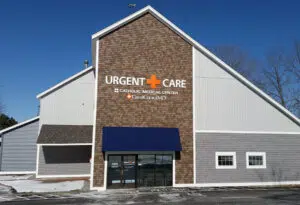
With bee season upon us, it is important to know what to do if you or a family member is stung.
For most, bee stings are a minor annoyance. For some, the reaction to a sting can be more severe. For others, it can be life-threatening. ClearChoiceMD Urgent Care can provide excellent care for many bee stings.
If you are experiencing a severe allergic reaction, call 911 and get to an emergency room. A severe reaction—sometimes called anaphylaxis—is characterized by the following symptoms:
- Swelling of your neck, face, or mouth.
- Lightheadedness.
- Fainting.
- Seizures.
- Loss of consciousness.
- Difficulty breathing.
- Cyanosis (blue or gray fingers, lips, or face)
- Heart rate that is thready or rapid.
- Nausea, vomiting, or diarrhea.
Urgent care is a good choice for less severe reactions, including mild or moderate reactions, especially if you are experiencing ongoing pain, swelling, or signs of infection. When you are deciding when to go to urgent care for a bee sting, it is helpful to understand common symptoms.
Bee Sting Symptoms
Being stung by a bee can trigger different reactions in different people, ranging from mild to severe. You should know that having a certain reaction after a bee sting does not guarantee you’ll have the same type of reaction if you are stung in the future.
Mild Reaction Symptoms
A typical reaction is mild and often includes these symptoms:
- Sharp pain at the site.
- Red bump at the site.
- Mild swelling around the sting.
Pain and swelling usually subside after a few hours in a mild reaction.
Moderate Reaction Symptoms
Some people experience a slightly more severe reaction after a bee sting. Symptoms of a moderate reaction include:
- Significant redness at the site.
- Noticeable swelling at the site that lasts 48 hours or more.
The effects of a moderate reaction may take up to 10 days to resolve. Having a moderate reaction does not necessarily mean you will have increasingly severe reactions, but you should be watchful for this. If you have moderate reactions each time you are stung, you should discuss prevention and treatment options with your doctor.
Signs of Infection
Certain signs and symptoms may indicate that your sting is becoming infected, and you should see a doctor in urgent care:
- Fever. An elevated temperature (usually over 100.3°F).
- Redness: The skin around the site may become increasingly red, itchy, or blotchy.
- Swelling: The surrounding area may become more swollen and raised.
- Drainage: The drainage of pus or other fluid could indicate an infection.
- Feeling sick: A general feeling of malaise may point to an infection. Other symptoms include loss of appetite, body aches, and fatigue.
- Pain: Pain that is not resolving or is increasing is a concerning sign.
If you have concerns about your bee sting, visit us at ClearChoiceMD Urgent Care. Our experienced clinicians will evaluate your condition, discuss your symptoms, and choose the best bee sting treatment to relieve your symptoms and help you heal.
Bee Sting Treatment in Urgent Care
Spring in New England is beautiful. The warmer weather brings many enjoyable things: flowers, picnics, camping, sports, and family get-togethers. Most wouldn’t add bees to that list, but they are abundant and active.
When you go to ClearChoiceMD Urgent Care for a bee sting, our staff will see you quickly and provide the care you need.
- Cleaning: A provider will evaluate and clean the site carefully to prevent infection.
- Swelling. Treatment for swelling after a bee sting may include ice, anti-inflammatory medications, or antihistamines.
- Monitoring: Our clinicians will monitor you closely for signs of an unfolding allergic reaction and ensure you get the help you need.
At ClearChoiceMD Urgent Care, we want you to be informed and prepared. It’s important to understand when to go to urgent care for a bee sting, and you can rest assured that our experienced staff will provide the care you need.
For rapid, convenient urgent care for insect bites and stings, visit any of our 20 ClearChoiceMD Urgent Care locations. We are dedicated to serving our communities across New Hampshire, Maine, Massachusetts, and Vermont.


















